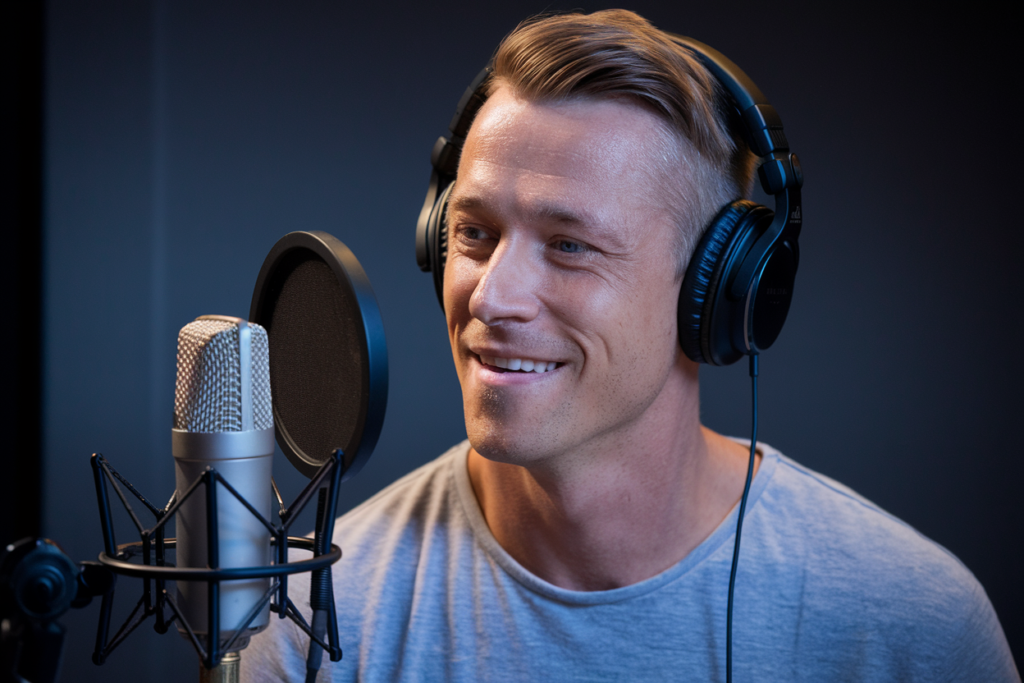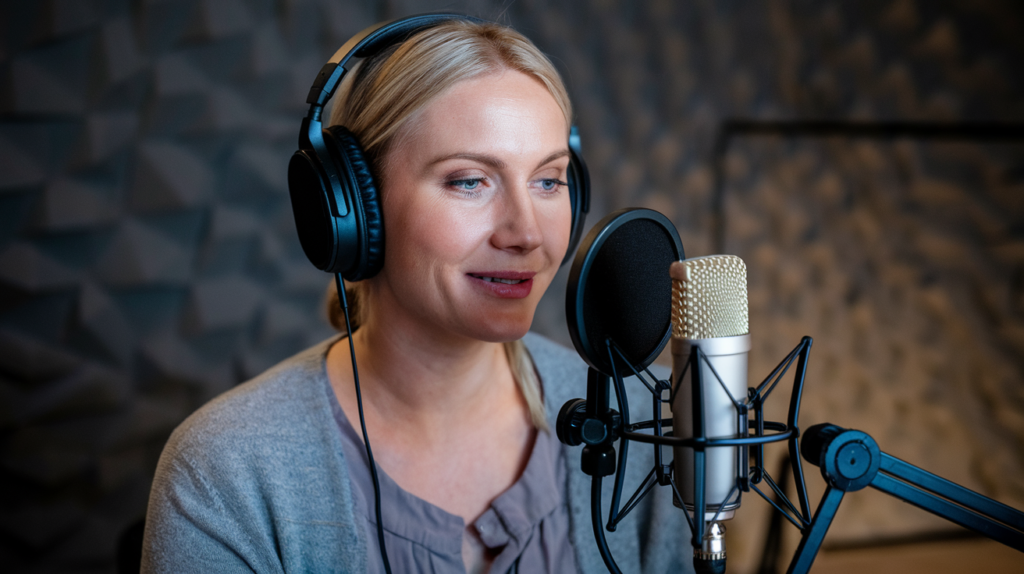Key Takeaways
- Understanding Australian English involves grasping its unique culture, accent, vocabulary, and slang to create authentic voiceovers.
- Key features of Australian English include regional accents, distinct vocabulary (e.g., “arvo”), and informal expressions that resonate with local audiences.
- Authenticity is crucial in voiceovers as it enhances audience engagement and builds trust by making content relatable and credible.
- Incorporating local slang and understanding the nuances of regional accents are essential techniques for producing genuine Australian voiceovers.
- Avoid common pitfalls such as stereotyping accents or using mispronunciations to ensure your voiceover resonates authentically with listeners.
Ever wondered what makes Australian English voiceovers truly authentic? It’s not just about the accent; it’s about capturing the essence of Aussie culture and nuances that resonate with listeners. Whether you’re a content creator, marketer, or voice artist, nailing that genuine sound can be challenging.
Understanding Australian English
Grasping the essence of Australian English is crucial for creating authentic voiceovers. This dialect isn’t just about pronunciation; it reflects a unique culture and identity.
Key Features of Australian English
Australian English features distinct elements that set it apart. Some key characteristics include:
- Accent: The Australian accent varies across regions but generally has a flat intonation with vowel shifts.
- Vocabulary: Unique terms like “arvo” (afternoon) and “biscuit” (cookie) reflect local usage.
- Slang: Australians often use informal language, such as “fair dinkum” to express authenticity.
- Diminutives: Commonly used are shortened forms of words, like “barbie” for barbecue or “Sandy” for Sandringham.
Understanding these features enhances your ability to produce relatable voiceovers that resonate with an audience seeking authenticity.
Differences from Other English Dialects
Australian English differs significantly from other dialects in several ways:
- Pronunciation Variations: Unlike American or British accents, certain vowels in Australian speech sound different, which can affect clarity in voiceovers.
- Influence of Indigenous Languages: Many place names and some vocabulary derive from Aboriginal languages, adding depth to the dialect.
- Cultural References: Recognizing local customs, sports references, and cultural touchstones ensures your content feels genuine to listeners.
Familiarity with these differences allows you to tailor your voiceover projects effectively. By incorporating these aspects into your work, you connect more authentically with an audience familiar with the nuances of Australian life.
Importance of Authenticity in Voiceovers
Authenticity plays a crucial role in voiceovers. When you capture the genuine essence of Australian English, your message resonates more deeply with listeners. This connection enhances audience engagement and establishes a stronger bond.
Impact on Audience Engagement
Engaging your audience hinges on authenticity. Using an authentic Australian accent and incorporating local slang makes your voiceover relatable. Think about how much easier it is to connect with someone who speaks your language—literally! For example, when a voice artist uses expressions like “arvo” or “barbie,” it creates familiarity. This familiarity encourages listeners to pay closer attention, leading to increased retention and effectiveness of the message.
Building Trust with the Audience
Trust forms the foundation of any successful communication strategy. An authentic voiceover builds credibility, making your content feel more trustworthy. When you hire a voice actor who genuinely embodies the nuances of Australian culture, you signal that you value quality and relevance. Listeners are more likely to engage with content that feels sincere rather than generic or forced. You want them not only to hear but also to believe in what they’re hearing; authenticity fosters that belief and supports long-term relationships between creators and audiences.
Techniques for Making Australian English Voiceovers Authentic
Creating authentic Australian English voiceovers involves several techniques that ensure cultural relevance and genuine connection with the audience.
Using Local Vocabulary and Slang
Incorporating local vocabulary and slang is essential for authenticity in your voiceovers. Words like “arvo” for afternoon or “biscuit” instead of cookie can make a significant difference in how relatable your content feels. Using expressions such as “fair dinkum” adds an informal touch that resonates with listeners familiar with Australian culture. Familiarize yourself with these terms, as they enrich your script and enhance the overall delivery.
Understanding Regional Accents
Grasping regional accents is crucial when aiming to produce authentic Australian voiceovers. Australia boasts diverse accents ranging from broad to cultivated variations, each representing different regions like Sydney, Melbourne, or Brisbane. Recognizing these nuances helps you tailor your performance to match the intended audience accurately. You might notice subtle differences in vowel sounds or intonations—pay close attention to those details, as they play a vital role in conveying authenticity and engaging your listeners effectively.
Engaging deeply with these elements not only enriches your voiceover but also establishes trust and credibility among audiences who appreciate genuine representation of their culture.
Common Pitfalls to Avoid
When creating authentic Australian English voiceovers, several common pitfalls can undermine your efforts. Being aware of these missteps helps ensure that your voiceovers resonate with the audience.
Stereotyping Accents
Stereotyping accents often leads to inauthentic portrayals. You might think that a thick accent is all that’s needed for an effective performance, but this approach can sound forced or exaggerated. Instead, focus on delivering a natural and genuine sound that reflects local nuances. Consider the diversity of accents across Australia—from broad regional variations to subtle differences within urban areas. Engaging with these complexities creates more relatable and believable voiceovers.
Mispronunciations and Inaccurate Expressions
Mispronunciations and inaccurate expressions can alienate listeners who expect authenticity. Using slang or phrases incorrectly diminishes credibility as a voice artist. It’s essential to research commonly used terms, such as “arvo” for afternoon or “barbie” for barbecue, ensuring you understand their context within Australian culture. Pay attention to pronunciation as well; minor errors can significantly impact how your message is received by an audience familiar with the dialect.
By avoiding these pitfalls, you enhance your ability to deliver compelling Australian English voiceovers that connect deeply with listeners, fostering engagement and trust in your work.
Conclusion
Creating authentic Australian English voiceovers is about more than just nailing the accent. It’s about immersing yourself in the culture and understanding the local nuances that resonate with your audience. By using regional vocabulary and slang, you can enhance relatability and establish a stronger connection.
Avoid common pitfalls like stereotyping accents or mispronouncing terms, as these can undermine your credibility. Focus on delivering a genuine sound that reflects the diverse nature of Australian English.
Ultimately, when you achieve authenticity in your voiceovers, you build trust with your listeners, fostering engagement that lasts beyond a single project. Embrace these elements to create impactful content that truly speaks to your audience.
Frequently Asked Questions
What is the importance of authenticity in Australian English voiceovers?
Authenticity in Australian English voiceovers is crucial for connecting with listeners. A genuine accent and use of local slang make the content relatable, fostering familiarity that enhances audience engagement. This trust signals sincerity and relevance, creating a stronger bond between creators and their audiences.
How does Australian English differ from other English dialects?
Australian English features unique pronunciation, regional accents, and specific vocabulary that set it apart from other dialects. It incorporates informal slang, diminutives, and influences from Indigenous languages, making it distinctively reflective of the local culture and identity.
What are some key elements to include for authentic Australian voiceovers?
To achieve authentic Australian voiceovers, incorporate distinctive vocabulary (like “arvo” for afternoon), use local slang (like “fair dinkum”), and understand regional accent variations. These elements help create a delivery that resonates more deeply with an audience familiar with Australian life.
What common pitfalls should be avoided in creating these voiceovers?
Common pitfalls include stereotyping accents which leads to inauthentic portrayals. Mispronouncing words or using slang incorrectly can alienate listeners. It’s essential to maintain a natural sound that accurately reflects local nuances to uphold credibility as a voice artist.
Who can benefit from understanding authentic Australian English voiceovers?
Content creators, marketers, and voice artists can all benefit from understanding authentic Australian English voiceovers. This knowledge helps them connect more genuinely with audiences seeking relatable content that reflects cultural nuances inherent in the language.







